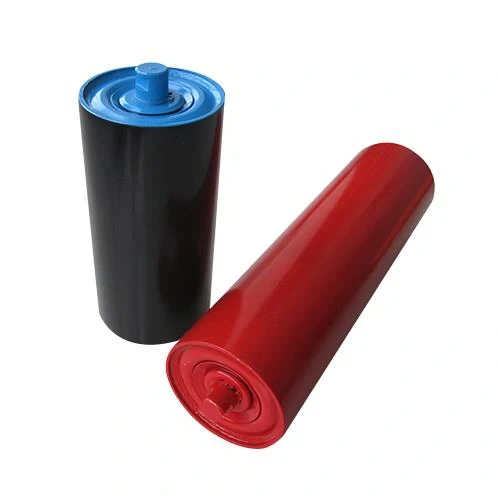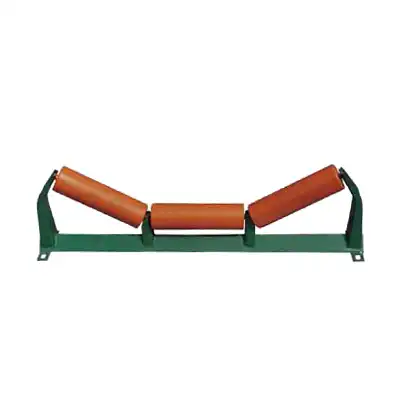- English
- French
- German
- Portuguese
- Spanish
- Russian
- Japanese
- Korean
- Arabic
- Greek
- German
- Turkish
- Italian
- Danish
- Romanian
- Indonesian
- Czech
- Afrikaans
- Swedish
- Polish
- Basque
- Catalan
- Esperanto
- Hindi
- Lao
- Albanian
- Amharic
- Armenian
- Azerbaijani
- Belarusian
- Bengali
- Bosnian
- Bulgarian
- Cebuano
- Chichewa
- Corsican
- Croatian
- Dutch
- Estonian
- Filipino
- Finnish
- Frisian
- Galician
- Georgian
- Gujarati
- Haitian
- Hausa
- Hawaiian
- Hebrew
- Hmong
- Hungarian
- Icelandic
- Igbo
- Javanese
- Kannada
- Kazakh
- Khmer
- Kurdish
- Kyrgyz
- Latin
- Latvian
- Lithuanian
- Luxembou..
- Macedonian
- Malagasy
- Malay
- Malayalam
- Maltese
- Maori
- Marathi
- Mongolian
- Burmese
- Nepali
- Norwegian
- Pashto
- Persian
- Punjabi
- Serbian
- Sesotho
- Sinhala
- Slovak
- Slovenian
- Somali
- Samoan
- Scots Gaelic
- Shona
- Sindhi
- Sundanese
- Swahili
- Tajik
- Tamil
- Telugu
- Thai
- Ukrainian
- Urdu
- Uzbek
- Vietnamese
- Welsh
- Xhosa
- Yiddish
- Yoruba
- Zulu
What Equipment Is Used in Conveyor Roller Manufacturing?
2024-06-25 08:50:40
Conveyor roller manufacturing is a complex process that involves several stages and various pieces of specialized equipment. Understanding what Conveyor Roller Manufacturing Equipment is used is essential for anyone interested in the logistics, automation, or material handling industries. This blog will delve into the details, exploring the machinery and tools involved in the production of conveyor rollers. We'll answer three common questions to provide a comprehensive overview of the manufacturing process.
What Types of Machines Are Used for Conveyor Roller Manufacturing?
The production of conveyor rollers involves several types of machines, each designed to perform specific tasks. Here, we will discuss some of the most critical machines used in the manufacturing process.
1. Cutting Machines
Cutting machines are crucial in the initial stages of Conveyor Roller Manufacturing Equipment. They are used to cut raw materials, such as steel tubes, to the desired length. Various cutting technologies are employed, including:
- Sawing Machines: These machines use a blade to cut through the material. They can be manual, semi-automatic, or fully automatic.
- Laser Cutting Machines: These provide precise cuts and are ideal for creating custom shapes and sizes.
- Plasma Cutting Machines: Used for cutting thicker materials, plasma cutting is efficient and cost-effective.
2. CNC Machines
Computer Numerical Control (CNC) machines are pivotal in the conveyor roller manufacturing process. CNC machines automate and control the manufacturing process with high precision, ensuring consistency and accuracy. Key functions of CNC machines include:
- Turning: CNC lathes turn the raw material into cylindrical shapes, forming the roller's core.
- Milling: CNC milling machines are used to create key slots, holes, and other necessary features on the rollers.
- Drilling: These machines drill precise holes into the roller's body for assembly purposes.
3. Welding Machines
Welding is a crucial process in conveyor roller manufacturing, used to join metal parts securely. Different types of welding machines are employed based on the material and the required strength of the weld. Common welding methods include:
- MIG Welding: Metal Inert Gas (MIG) welding is widely used for its speed and versatility.
- TIG Welding: Tungsten Inert Gas (TIG) welding offers precision and is used for high-quality, intricate welds.
- Resistance Welding: This includes spot welding and seam welding, typically used for assembling smaller components.
4. Coating and Painting Machines
Coating and painting are essential for protecting the rollers from corrosion and wear. Various machines and techniques are used to apply coatings, including:
- Powder Coating Machines: These apply a dry powder that is then cured under heat to form a hard, protective layer.
- Spray Painting Machines: These are used for applying liquid paints, providing a smooth finish and additional protection.
5. Assembly Machines
Once all components are manufactured, they need to be assembled into complete conveyor rollers. Assembly machines streamline this process, ensuring that each part fits perfectly. These machines often include:
- Presses: Used to fit bearings and other components into place.
- Riveting Machines: Securely fasten parts together using rivets.
- Automated Assembly Lines: These integrate various assembly tasks into a continuous process, enhancing efficiency and output.
6. Inspection and Testing Machines
Quality control is a critical aspect of manufacturing conveyor rollers. Inspection and testing machines ensure that the final products meet the required specifications and standards. These machines include:
- Dimensional Inspection Machines: These measure the physical dimensions of the rollers to ensure they match the design specifications.
- Non-Destructive Testing (NDT) Machines: These test the integrity of the welds and materials without causing damage, ensuring the rollers can withstand operational stresses.
- Dynamic Balancing Machines: These test the balance of the rollers, ensuring smooth operation within the conveyor system.
How Is Conveyor Roller Quality Controlled?
Ensuring the quality of conveyor rollers is vital to their performance and longevity. The manufacturing process includes several stages of quality control to guarantee that each roller meets industry standards and customer specifications.
1. Raw Material Inspection
The quality control process begins with the inspection of raw materials. Ensuring that the steel or other materials used are of high quality is crucial for producing durable rollers. Common checks include:
- Chemical Composition Analysis: Verifying the material composition to ensure it meets the required specifications.
- Mechanical Property Testing: Testing for tensile strength, hardness, and other mechanical properties.
2. In-Process Inspections
During the manufacturing process, various in-process inspections are conducted to ensure that each step meets quality standards. These inspections include:
- Dimensional Checks: Measuring parts to ensure they are within specified tolerances.
- Visual Inspections: Checking for surface defects, weld quality, and other visible issues.
- Non-Destructive Testing (NDT): Performing tests like ultrasonic or magnetic particle inspection to detect internal defects.
3. Final Product Inspection
Before the rollers are shipped to customers, a final inspection is conducted. This includes:
- Load Testing: Ensuring the roller can handle the expected load without failure.
- Rotational Testing: Checking that the roller rotates smoothly and without excessive friction.
- Surface Coating Inspection: Ensuring that coatings are applied uniformly and provide adequate protection.
4. Documentation and Traceability
Maintaining detailed records of the manufacturing process and inspections is essential for traceability. This documentation includes:
- Material Certificates: Verifying the quality and origin of raw materials.
- Inspection Reports: Recording the results of various inspections and tests.
- Production Logs: Tracking the manufacturing process for each roller, including machine settings and operator details.
5. Continuous Improvement
Quality control is an ongoing process that involves continuous improvement. Manufacturers regularly review their processes and incorporate feedback to enhance quality. This includes:
- Employee Training: Ensuring that workers are skilled and knowledgeable about quality standards and inspection techniques.
- Process Optimization: Using data from inspections and production to identify areas for improvement.
- Customer Feedback: Listening to customer feedback to address issues and improve product quality.
What Are the Latest Trends in Conveyor Roller Manufacturing Technology?
The conveyor roller manufacturing industry is constantly evolving, with new technologies and trends emerging to enhance efficiency, quality, and sustainability. Here are some of the latest trends shaping the future of conveyor roller manufacturing.
1. Automation and Robotics
Automation is revolutionizing conveyor roller manufacturing by increasing efficiency and reducing human error. Key advancements include:
- Robotic Welding: Robots perform precise and consistent welds, improving quality and reducing production time.
- Automated Assembly Lines: Integrating robots and automated systems to streamline the assembly process, increasing throughput and consistency.
- Machine Learning and AI: Using artificial intelligence to optimize manufacturing processes, predict maintenance needs, and improve quality control.
2. Advanced Materials
The use of advanced materials is enhancing the performance and durability of conveyor rollers. Some of these materials include:
- Composite Materials: Combining different materials to create rollers that are lightweight yet strong and resistant to corrosion.
- High-Strength Alloys: Using alloys that offer superior strength and wear resistance for demanding applications.
- Recycled Materials: Incorporating recycled materials to reduce environmental impact and promote sustainability.
3. Sustainable Manufacturing Practices
Sustainability is becoming increasingly important in manufacturing. Roller Production Equipment are adopting practices to reduce their environmental footprint, such as:
- Energy-Efficient Machinery: Using machines that consume less energy and produce fewer emissions.
- Waste Reduction: Implementing processes to minimize waste and recycle materials.
- Eco-Friendly Coatings: Using coatings that are less harmful to the environment while still providing excellent protection.
4. Digital Twin Technology
Digital twin technology involves creating a virtual replica of the manufacturing process and the final product. This technology offers several benefits, including:
- Process Optimization: Simulating the manufacturing process to identify and address potential issues before they occur.
- Predictive Maintenance: Using data from the digital twin to predict when machines will need maintenance, reducing downtime and costs.
- Enhanced Quality Control: Monitoring the digital twin to ensure that the final product meets all specifications and standards.
5. IoT and Smart Manufacturing
The Internet of Things (IoT) is connecting machines and systems, creating smart manufacturing environments. Benefits of IoT in conveyor roller manufacturing include:
- Real-Time Monitoring: Continuously monitoring machines and processes to detect and address issues immediately.
- Data-Driven Decision Making: Using data collected from IoT devices to make informed decisions and optimize operations.
- Enhanced Collaboration: Enabling better communication and collaboration between different parts of the manufacturing process.
Conclusion
Conveyor Roller Manufacturing Equipment is a complex process that involves a wide range of specialized equipment. From cutting and CNC machines to welding and coating technologies, each piece of Conveyor Roller Fabrication Tools plays a crucial role in producing high-quality rollers. Quality control is essential throughout the manufacturing process to ensure that the final products meet industry standards and customer expectations. The industry is also embracing new trends, such as automation, advanced materials, and sustainable practices, to improve efficiency and reduce environmental impact. As technology continues to advance, the conveyor roller manufacturing industry will undoubtedly continue to evolve, offering even more innovative solutions for material handling and automation.
References
- "Understanding Conveyor Systems," ThomasNet.
- "Conveyor Rollers - Roller Manufacturing Process," CSE.
- "CNC Machine Tools," Modern Machine Shop.
- "The Importance of Welding in Manufacturing," Lincoln Electric.
- "The Powder Coating Process," Powder Coating Institute.
- "Automated Assembly Solutions," Assembly Magazine.
- "Quality Control in Manufacturing





